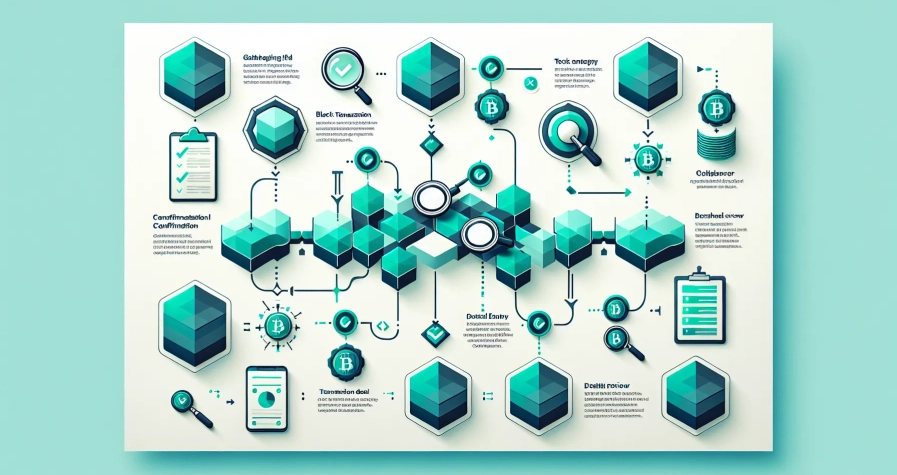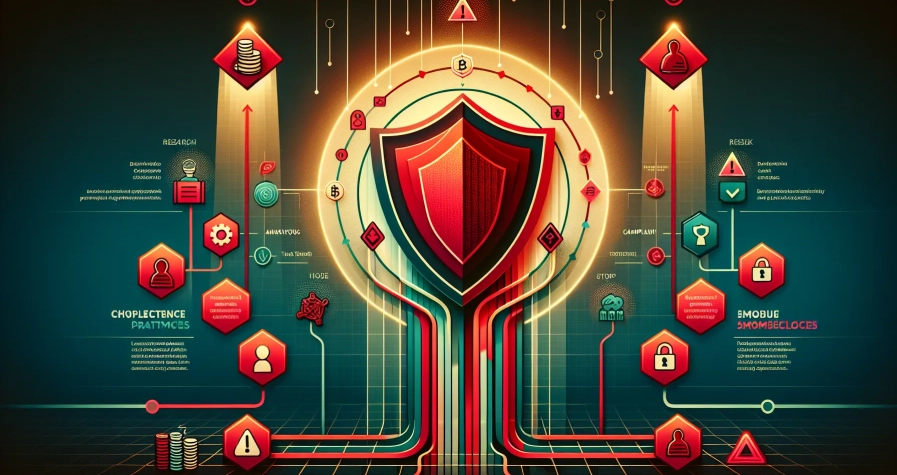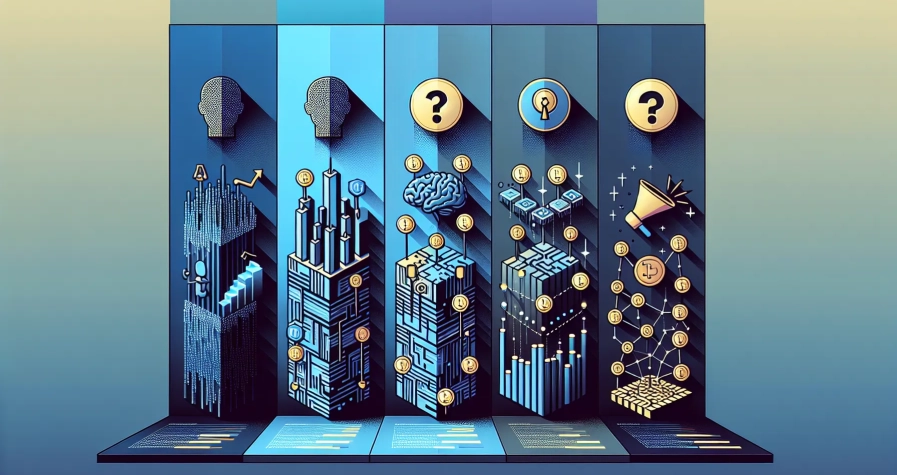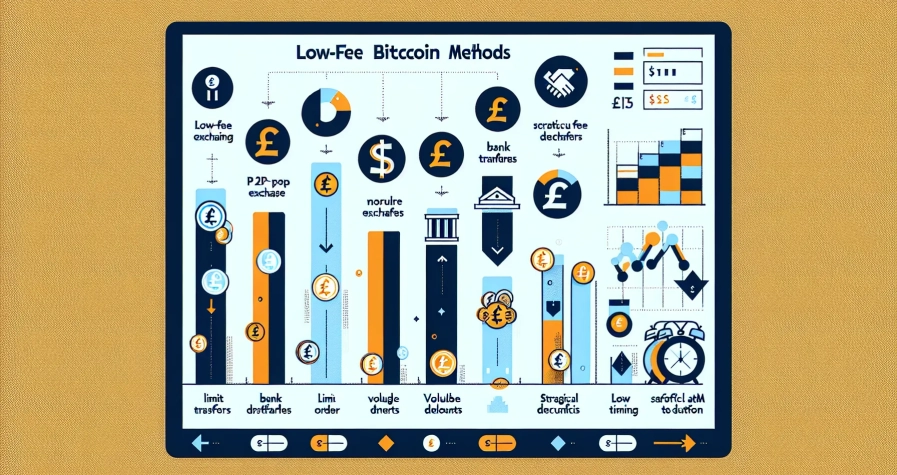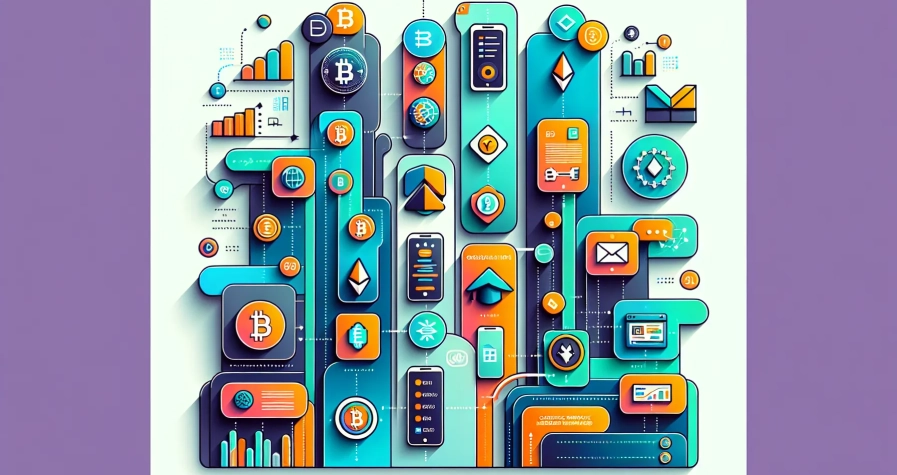You’ve probably heard the term “Web3” buzzing around tech circles and social media feeds, but what exactly does it mean? This revolutionary concept represents the next evolution of the internet – a decentralised digital ecosystem that promises to give you more control over your data, identity and online interactions.
Unlike today’s web where tech giants dominate the landscape, Web3 envisions an internet built on blockchain technology and powered by cryptocurrencies. It’s designed to eliminate intermediaries and create a more democratic digital space where you own your content and data.
Understanding Web3 isn’t just about staying current with tech trends – it’s about preparing for a fundamental shift in how we interact online. From decentralised finance to NFTs and smart contracts, Web3 technologies are already reshaping industries and creating new opportunities for creators, businesses and everyday users alike.
What Is Web3?
Web3 represents the third generation of internet technology, fundamentally transforming how you interact with digital platforms through decentralised protocols and blockchain infrastructure. This paradigm shift moves control from centralised corporations back to individual users.
The Evolution from Web1 to Web3
Web1 operated as a static information highway where you consumed content without interaction capabilities. Websites functioned as digital brochures with limited user engagement between 1991 and 2004.
Web2 introduced dynamic platforms enabling content creation, social networking, and collaborative experiences. You gained the ability to upload videos, share posts, and interact through platforms like Facebook, YouTube, and Twitter from 2004 onwards, though these companies retained ownership of your data.
Web3 establishes a decentralised internet where you own your digital assets, data, and identity. Blockchain technology eliminates intermediaries whilst smart contracts automate transactions, creating a peer-to-peer ecosystem that operates without central authorities controlling your online activities.
Key Characteristics of Web3
Decentralisation removes single points of failure by distributing data across multiple nodes rather than centralised servers. You access services directly from distributed networks instead of relying on corporate-controlled platforms.
User ownership grants you complete control over digital assets through cryptocurrency wallets and blockchain addresses. Your data, tokens, and digital collectibles remain under your direct control without third-party custodianship.
Interoperability enables seamless asset transfer between different blockchain networks and applications. You can move your digital identity, cryptocurrencies, and NFTs across various platforms without platform-specific restrictions.
Transparency provides public verification of all transactions through blockchain ledgers. You can audit smart contract code, verify transaction history, and confirm network operations without trusting centralised authorities.
Permissionless access allows participation without requiring approval from gatekeepers or intermediaries. You can build applications, trade assets, or join networks based solely on technical requirements rather than corporate permissions.
Core Technologies Behind Web3
Web3’s revolutionary capabilities stem from three foundational technologies that work together to create a decentralised internet ecosystem. These core components enable the peer-to-peer interactions and user ownership that define Web3’s transformative potential.
Blockchain and Distributed Ledgers
Blockchain technology serves as Web3’s backbone by creating an immutable digital ledger that records transactions across multiple computers simultaneously. You interact with a system where data gets stored across thousands of nodes rather than on centralised servers controlled by single entities.
Key features of blockchain technology include:
- Transparency: Every transaction becomes publicly viewable on the network
- Immutability: Records cannot be altered once confirmed by the network
- Decentralisation: No single authority controls the data or network operations
- Security: Cryptographic hashing protects data integrity across the distributed network
This distributed ledger approach eliminates intermediaries whilst ensuring data remains secure and accessible. You maintain control over your information because blockchain networks operate through consensus mechanisms rather than corporate gatekeepers.
Decentralised Applications (dApps)
Decentralised applications represent Web3’s answer to traditional software by running on blockchain networks instead of centralised servers. You access these applications directly through peer-to-peer networks where no single company controls functionality or user data.
dApps operate through several distinct characteristics:
- Open-source code: Developers can inspect and verify application logic
- Autonomous operation: Applications run independently without centralised oversight
- Token integration: Native cryptocurrency rewards incentivise user participation
- Community governance: Users vote on application updates and changes
Popular dApps span various categories including decentralised finance platforms like Uniswap, gaming applications such as Axie Infinity, and social networks like Lens Protocol. You interact with these applications whilst maintaining ownership of your digital assets and personal data.
Smart Contracts
Smart contracts automate Web3 interactions through self-executing code that enforces agreements without requiring trusted intermediaries. You engage with these programmable contracts that automatically execute predetermined conditions once specific criteria are met.
| Smart Contract Feature | Traditional Contract | Smart Contract Advantage |
|---|---|---|
| Execution Speed | Days to weeks | Minutes to hours |
| Cost | High legal fees | Minimal gas fees |
| Trust Required | Third-party verification | Code-based verification |
| Transparency | Private negotiations | Publicly auditable code |
These digital contracts power decentralised finance protocols, NFT marketplaces, and governance systems across Web3 platforms. You benefit from reduced costs and faster settlement times because smart contracts eliminate the need for lawyers, banks, and other traditional intermediaries.
Smart contracts also enable complex Web3 features like yield farming, automated market making, and decentralised autonomous organisation governance. You participate in these systems knowing that code execution remains transparent and predictable across all network participants.
Web3 vs Traditional Internet
Web3 fundamentally transforms how you interact with digital platforms by redistributing control from corporations to users. This shift creates distinct differences in ownership structures, data management, and security protocols.
Ownership and Control
You gain true ownership of digital assets in Web3 through cryptographic wallets that store cryptocurrencies, NFTs, and other blockchain-based items. Your assets remain under your complete control, verified through immutable blockchain records that prevent unauthorised alterations or removals.
Traditional internet platforms maintain control over your data and content, restricting your ability to transfer or monetise digital possessions across different services. Google, Facebook, and other major companies determine access policies and can suspend accounts without recourse.
Web3 eliminates these intermediaries by providing permissionless access to decentralised applications. You interact directly with smart contracts and blockchain protocols without requiring approval from centralised authorities or platform administrators.
| Control Aspect | Traditional Internet | Web3 |
|---|---|---|
| Asset ownership | Platform-controlled | User-controlled via crypto wallets |
| Data portability | Limited between platforms | Fully portable across dApps |
| Account access | Subject to platform policies | Permissionless and autonomous |
| Content monetisation | Platform takes commission | Direct user monetisation |
Data Privacy and Security
Your personal information receives enhanced protection through Web3’s distributed architecture that eliminates single points of failure. Blockchain networks store data across multiple nodes, making large-scale breaches significantly more difficult compared to centralised databases.
You control your digital identity in Web3 environments, restricting third-party access to personal information through cryptographic verification methods. This approach contrasts with traditional internet services that collect, store, and often sell your data to advertisers and other parties.
Tamper-proof records on blockchain ensure data integrity through cryptographic hashing and consensus mechanisms. Once recorded, your information cannot be altered or deleted without network consensus, providing stronger protection against unauthorised modifications.
Traditional internet systems store your data in centralised servers vulnerable to cyberattacks, data breaches, and unauthorised access by platform operators. Major breaches affecting millions of users occur regularly across social media platforms, e-commerce sites, and cloud storage services.
Why Web3 Matters for Users
Web3 shifts power and ownership back to you as an individual user. Unlike Web 2.0’s corporate dominance over your data, Web3 creates a decentralised ecosystem where you govern your information, identity, and digital assets.
Digital Ownership and NFTs
Digital ownership becomes a reality through Non-Fungible Tokens (NFTs), which are unique digital assets secured on blockchain networks. You can own, buy, and sell digital items—from artwork and music to virtual real estate—with verifiable provenance and value that traditional platforms cannot provide.
NFTs enable you to truly possess digital content rather than merely licensing it from centralised platforms. Artists and creators can directly monetise their work without intermediaries, fostering fair payment structures and innovative digital experiences such as virtual exhibitions. This direct connection eliminates the traditional gatekeepers who previously controlled access to creative markets.
Your digital assets remain under your complete control through cryptographic ownership, allowing you to transfer them across compatible platforms and marketplaces. This interoperability ensures that your investments and creative works maintain their value regardless of platform changes or business closures.
Financial Inclusion and DeFi
Decentralised Finance (DeFi) removes traditional financial institutions from your transactions, connecting you directly to a global financial system. You can lend, borrow, trade, and invest with lower costs, faster settlements, and without requiring approval from centralised authorities.
DeFi opens access to financial services for underbanked populations globally, requiring only an internet connection to participate. You gain greater control over your funds through self-custody wallets, eliminating the risk of account freezes or restrictions imposed by traditional banks.
| DeFi Impact | 2023 Statistics |
|---|---|
| Total lending volume | Over $100 billion |
| Settlement speed | Minutes vs days |
| Geographic reach | Global access |
Your financial opportunities expand significantly through DeFi protocols that operate 24/7 without geographical restrictions. These services offer higher yields on savings, lower borrowing costs, and innovative financial products that traditional institutions cannot match due to their operational constraints.
Why Web3 Matters for Businesses
Web3 transforms business operations through innovative revenue streams and cost-efficient processes that eliminate traditional barriers. Your business gains access to revolutionary models that redefine customer engagement and value creation.
New Business Models
Digital tokenisation creates unprecedented revenue opportunities for your business through programmable blockchain technology. You can issue cryptocurrencies and utility tokens that serve multiple functions beyond simple payment methods. These tokens incentivise user participation in your platform whilst enabling community governance through voting mechanisms. Your customers become stakeholders who contribute to platform decisions and benefit from its success.
Smart contracts automate complex business processes without requiring manual oversight or third-party verification. You implement programmable agreements that execute automatically when predetermined conditions are met. This technology enables subscription services, royalty distributions, and performance-based payments that operate transparently on blockchain networks.
Peer-to-peer interactions eliminate traditional gatekeepers between your business and customers. You establish direct relationships that bypass conventional distribution channels and their associated restrictions. Your platform operates autonomously through decentralised applications (dApps) that facilitate immediate transactions and interactions.
Reduced Intermediary Costs
Traditional Web 2.0 platforms extract significant revenue shares through their intermediary services and data control mechanisms. Your business typically pays commission fees ranging from 3-30% to platforms like Amazon, eBay, and payment processors for access to their user bases. These intermediaries also control customer data and relationships that limit your direct engagement opportunities.
Web3 eliminates most intermediary dependencies through blockchain-based direct transactions between you and your customers. Your business processes payments through decentralised networks that charge minimal transaction fees, often below 1% of traditional processing costs. You maintain complete ownership of customer relationships and interaction data without sharing revenue or control with platform operators.
Transparent blockchain records build customer trust without requiring expensive third-party verification services. Your business operations become publicly auditable through immutable ledgers that demonstrate authenticity and fairness. This transparency reduces costs associated with compliance auditing, dispute resolution, and trust-building marketing campaigns that traditional businesses require.
Challenges and Limitations of Web3
Despite its transformative potential, Web3 faces substantial obstacles that currently limit its widespread adoption. Understanding these challenges helps you grasp the complexity of transitioning from traditional internet infrastructure to a fully decentralised web.
Scalability Issues
Current blockchain networks struggle to process transactions at the scale required for global Web3 adoption. Bitcoin processes approximately 7 transactions per second, whilst Ethereum handles around 15 transactions per second, compared to Visa’s capacity of 65,000 transactions per second.
The scalability trilemma presents a fundamental challenge where you cannot simultaneously achieve perfect decentralisation, security, and scalability. Most blockchain projects compromise one aspect to strengthen the others, often sacrificing decentralisation for improved performance or security for faster processing speeds.
Layer 2 solutions like Optimistic Rollups and zk-Rollups are addressing these limitations by processing transactions off the main blockchain. These technologies can increase transaction throughput to thousands of transactions per second whilst maintaining security, though they add complexity to your user experience and require additional infrastructure investment.
Environmental Concerns
Proof of Work consensus mechanisms consume enormous amounts of energy, with Bitcoin’s network using approximately 150 terawatt-hours annually—equivalent to the energy consumption of entire countries like Argentina. This energy usage creates significant carbon footprints that contradict environmental sustainability goals.
Alternative consensus mechanisms like Proof of Stake reduce energy consumption by up to 99.95%, as demonstrated by Ethereum’s transition from Proof of Work in 2022. However, many established networks continue using energy-intensive methods, creating ongoing environmental challenges for Web3 adoption.
Mining operations often concentrate in regions with cheap electricity, sometimes leading to increased fossil fuel usage and strain on local power grids. You must consider these environmental implications when evaluating Web3 technologies for business or personal use.
Regulatory Uncertainty
Governments worldwide struggle to apply existing legal frameworks to decentralised technologies, creating an unpredictable regulatory landscape. The European Union’s Markets in Crypto-Assets (MiCA) regulation and the UK’s proposed Digital Securities Sandbox represent attempts to provide clarity, though comprehensive frameworks remain incomplete.
This uncertainty affects your ability to plan long-term Web3 strategies, as regulatory changes could impact token classifications, DeFi protocols, and cross-border transactions. Financial institutions and enterprises often hesitate to fully embrace Web3 technologies due to potential compliance risks and unclear legal obligations.
Different jurisdictions take varying approaches to Web3 regulation, from China’s restrictive stance to El Salvador’s Bitcoin adoption. This fragmentation complicates global Web3 development and forces you to navigate complex compliance requirements across multiple regulatory environments.
The Future of Web3
Web3’s trajectory indicates unprecedented growth across multiple dimensions of digital infrastructure and user adoption. Market projections estimate expansion from $2.25 billion in 2023 to approximately $33.53 billion by 2030, representing a compound annual growth rate that reflects increasing demand for decentralised solutions across industries.
Market Growth Projections
The Web3 ecosystem demonstrates accelerating adoption patterns driven by technological maturation and regulatory clarity. Investment flows into blockchain infrastructure, decentralised applications, and token-based economies create sustained momentum for platform development and user onboarding.
| Metric | 2023 | 2030 (Projected) |
|---|---|---|
| Market Value | $2.25 billion | $33.53 billion |
| Annual Growth Rate | – | 49.1% CAGR |
| Key Growth Drivers | DeFi adoption | AI integration |
Technology Integration Patterns
Artificial intelligence integration with blockchain networks enhances semantic markup capabilities and creates machine-readable internet content. This convergence enables automated smart contract execution, predictive analytics for decentralised finance protocols, and improved user interfaces for complex Web3 applications.
3D visualisation and metaverse technologies transform digital interactions through immersive environments where users own virtual assets and participate in decentralised economies. Virtual real estate, digital collectibles, and immersive gaming platforms represent early implementations of this technological fusion.
Regulatory Framework Evolution
Regulatory developments across jurisdictions balance innovation protection with consumer safety requirements. Governments establish clearer guidelines for cryptocurrency operations, decentralised autonomous organisation governance, and cross-border blockchain transactions, reducing compliance uncertainty that previously hindered business adoption.
European Union’s Markets in Crypto-Assets regulation and similar frameworks worldwide create standardised approaches to digital asset management, enabling institutional participation and mainstream integration of Web3 technologies.
Adoption Acceleration Factors
Enterprise blockchain implementations drive institutional adoption through supply chain transparency, automated compliance systems, and decentralised identity verification. Major corporations integrate Web3 protocols for customer data management, loyalty programmes, and direct-to-consumer engagement models.
Consumer adoption increases as user experience improvements reduce technical barriers to blockchain interaction. Simplified wallet interfaces, gasless transactions, and integrated payment systems make decentralised applications accessible to mainstream users without extensive technical knowledge.
Infrastructure Development
Layer 2 scaling solutions address current blockchain limitations through optimised transaction processing and reduced energy consumption. These developments enable Web3 platforms to support global user bases whilst maintaining decentralisation principles and environmental sustainability.
Interoperability protocols connect disparate blockchain networks, creating seamless user experiences across different decentralised platforms and enabling cross-chain asset transfers, unified identity management, and collaborative decentralised applications.
Conclusion
Web3 isn’t just another technological trend—it’s your gateway to a more equitable digital future. You’re witnessing the foundation of an internet where you truly own your data assets and interactions rather than surrendering control to corporate giants.
The transformation ahead will reshape how you work bank and create online. While challenges like scalability and regulation remain you’re already seeing solutions emerge through improved infrastructure and clearer governance frameworks.
Your early engagement with Web3 technologies today positions you at the forefront of this digital revolution. The question isn’t whether Web3 will transform the internet—it’s how quickly you’ll embrace the opportunities it creates for greater autonomy and financial freedom.
Frequently Asked Questions
What is Web3 and how does it differ from the current internet?
Web3 is the third generation of internet technology that creates a decentralised digital ecosystem where users control their data, identity, and online interactions. Unlike the current internet dominated by tech giants, Web3 uses blockchain technology to eliminate intermediaries and give users true ownership of their digital assets through cryptographic wallets.
What are the core technologies that power Web3?
Web3 is built on three main technologies: blockchain (an immutable digital ledger for transparency and security), decentralised applications (dApps) that allow direct user interaction without centralised control, and smart contracts that automate processes and reduce costs whilst increasing efficiency in peer-to-peer transactions.
How does Web3 impact traditional finance through DeFi?
Decentralised Finance (DeFi) removes traditional financial institutions from transactions, connecting users directly to a global financial system. This results in lower costs, faster settlements, and greater access to financial services, particularly benefiting underbanked populations whilst expanding financial opportunities through decentralised networks.
What are NFTs and how do they enable digital ownership in Web3?
Non-Fungible Tokens (NFTs) are unique digital assets that provide verifiable ownership of digital items on the blockchain. They allow users to own, buy, and sell digital content with proven provenance, enabling artists and creators to monetise their work directly without intermediaries whilst maintaining complete ownership rights.
What challenges does Web3 currently face for widespread adoption?
Web3 faces three major challenges: scalability issues as blockchain networks struggle to process global-scale transactions, environmental concerns from energy-intensive mining processes, and regulatory uncertainty across different jurisdictions that creates compliance risks and hinders long-term planning for businesses and individuals.
How is Web3 expected to grow in the coming years?
Web3 is projected to grow from $2.25 billion in 2023 to approximately $33.53 billion by 2030. Growth drivers include increasing DeFi adoption, AI integration with blockchain, evolving regulatory frameworks, enterprise blockchain implementations, improved user interfaces, and infrastructure developments like Layer 2 scaling solutions.
How does Web3 transform business operations and revenue models?
Web3 enables businesses to create new revenue streams through digital tokenisation, issue cryptocurrencies and utility tokens for user participation, automate processes with smart contracts, eliminate intermediaries for direct customer relationships, and reduce transaction fees through decentralised payment networks whilst maintaining complete data ownership.


